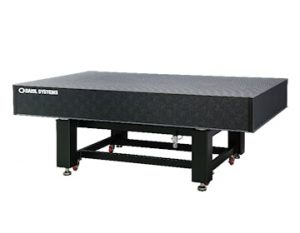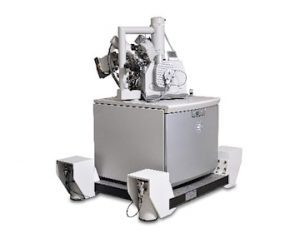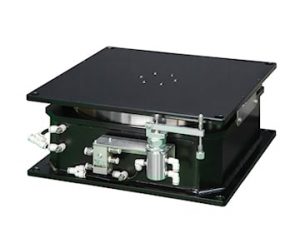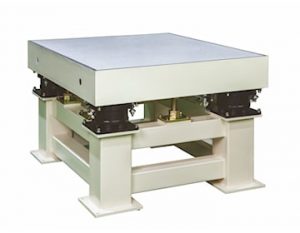Passive Vibration Isolation System
Passive Vibration Isolation System
A passive vibration isolation system consists of three components: an isolated mass (payload), a spring (K) and a damper (C) and they work as a harmonic oscillator. The payload and spring stiffness define a natural frequency of the passive vibration isolation system. While the spring reduces floor vibrations from being transmitted to the isolated payload, the damper eliminates the oscillation that is amplified within the vibration isolation system. In most cases, the passive vibration isolation systems employ a pneumatic spring due to its low natural frequency characteristic that provides outstanding vibration isolation performance and damping.
While the simple composition of the passive vibration isolation system can achieve the maximum vibration isolation efficiency, there are also limitations, such as a resonance phenomenon (vibration amplification) in the low frequency range (below 10 Hz), a longer settling time, and confined adjustments.
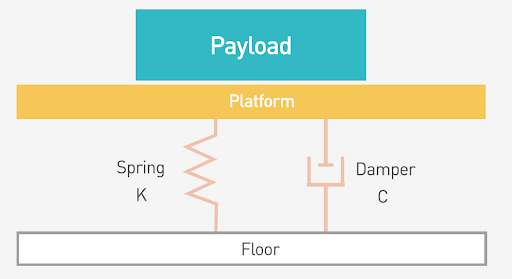
Vibration Isolation
Vibration isolation is defined as the process to isolate an object from sources of vibration. The theory of vibration isolation is to make the natural frequency of the system lower than the forced frequency and suppress the resonance at the natural frequency of the system. As technology advances, the vibration isolation technique is essentially required to isolate vibration sensitive metrology instruments from vibrations.
Transmissibility (T) indicates the ratio of the vibration amplitude of the vibration transmitted to a vibration isolated platform to that of the exciting vibration. The efficiency of the vibration isolation improves with the lower natural frequency, meaning that the lower T value is the better vibration isolation performance.
The frequency ratio is a function of the forced frequency and the natural frequency of the system and is used as an evaluation criterion to determine vibration isolation performance.
For the frequency ratio in the range (0 < frequency ratio < 1.414), the T is greater than 1 for all values of damping ratio (ζ), indicating vibration amplifications and transmission and damper helps to reduce the vibration amplifications. When the frequency ratio is equal to 1, vibration amplitude is maximized (resonance), and the amplified T value is minimized depending on damping ratio. The vibration isolation system with the higher damping ratio reduces more the vibration amplitudes than the vibration isolation system with the less damping ratio. However, there is a trade off between vibration isolation performance and damping ratio that as the damping ratio increases, the T declines more slowly.
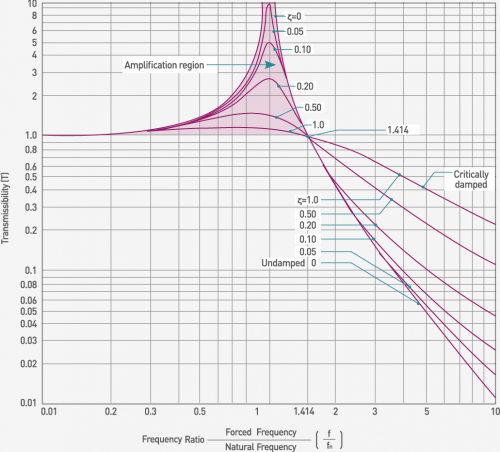
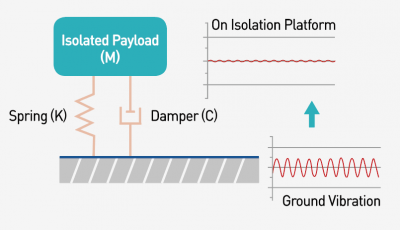



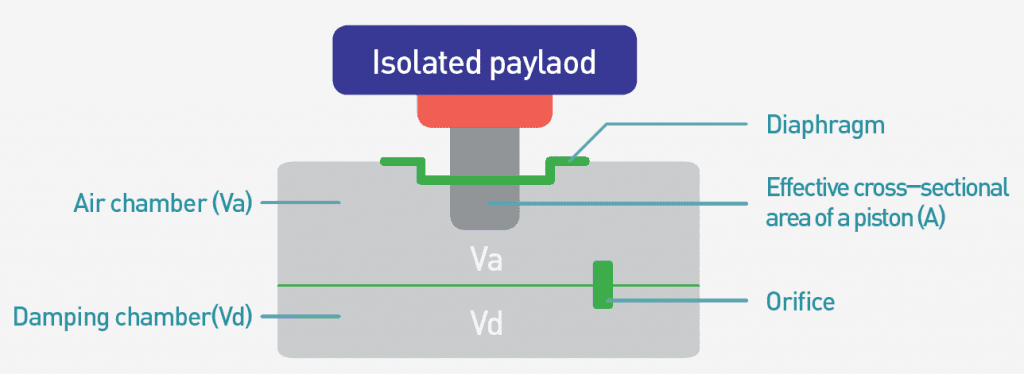
The natural frequency of the pneumatic isolator (passive vibration isolation) is defined by a function of the effective cross-sectional area of the piston and the pressurized volume of chambers.


